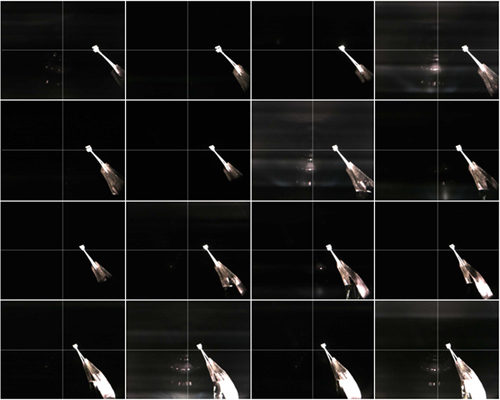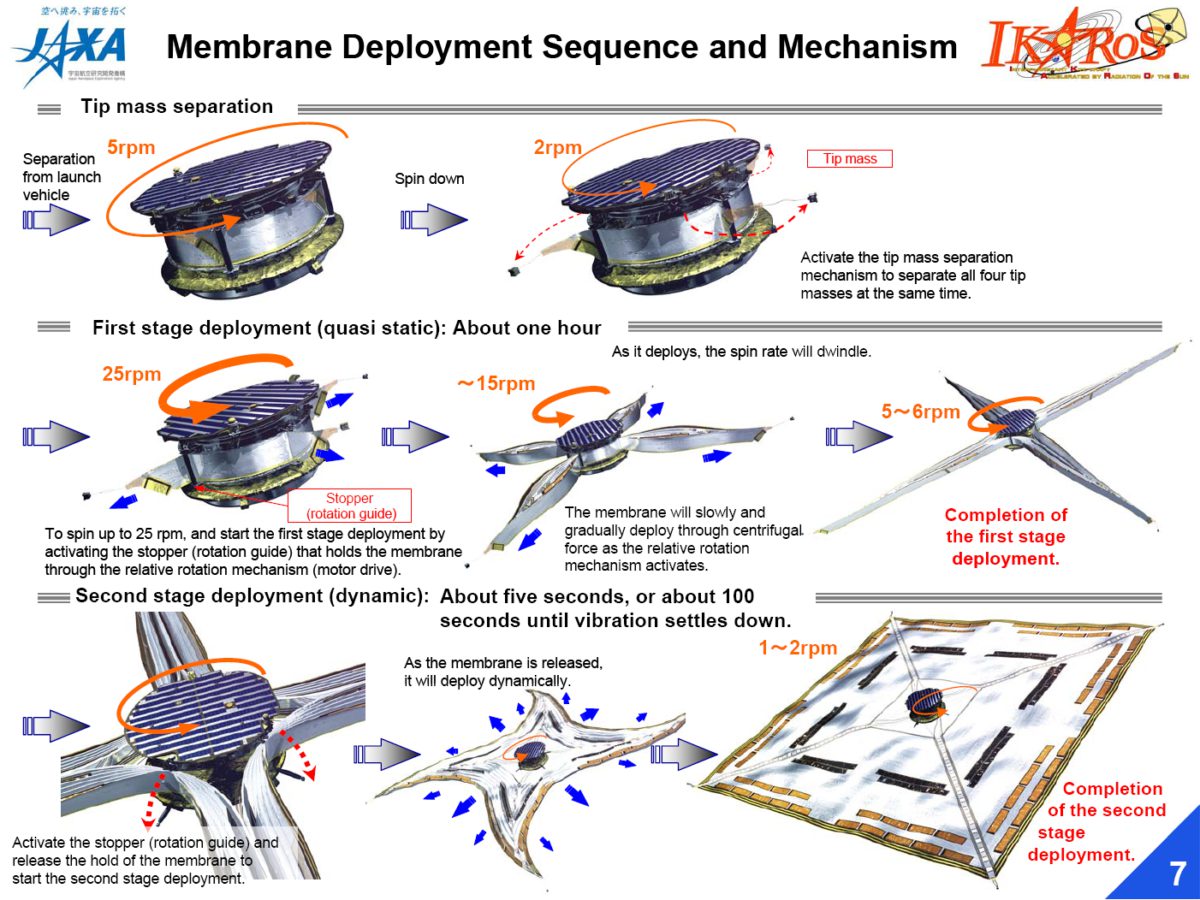Louis D. Friedman • Jun 04, 2010
IKAROS sail deployment proceeding
It is fantastic to be here at ISAS right now, with three major planetary missions in operations. And not just operating but, for two of them, critical moments of operation. Hayabusa, the asteroid sample return mission, is performing a critical trajectory correction maneuver which targets the spacecraft's return to Earth to the desert on the Australian continent. And IKAROS, the Japanese solar sail/solar power technology mission, is -- as I write this -- undergoing deployment of the solar sail. At the same time, Akatsuki, the Venus climate orbiter, has just completed its initial check-out and is beginning its relatively quiet interplanetary cruise phase.
Three planetary missions all at once, from an organization that totals no more than 400 people. It is remarkable. Especially when we realize that the asteroid sample return is only the second attempt in all history to robotically return a sample from the surface of a world beyond our Moon. And IKAROS, if successful, will be the world's first solar sail.
I am grateful to Jun Kawaguchi, the Director of Japanese Space Exploration Center (JSPEC), for inviting me here when they are so busy, so that I can observe what we hope will be the successful solar sail deployment. We have written a lot about the mission, and the Japanese space agency has lots of material about it on their web site and some great videos on YouTube, like this one.
Emily's description of the solar sail deployment was the best I have seen written in the U.S. As she noted the deployment is conducted in several stages, each stage containing a number of steps. It starts with the ejection of the tip masses, which begins the process of pulling out the sail. The early steps proceed slowly, step-by-step. The last two steps, which will deploy the full sail once the material is completely unpacked, proceed quickly, in a matter of seconds. We had hoped that would have happened tonight [Friday night in Japan], but it appears now it will happen tomorrow night. They were about halfway through the series of steps when we started the communications session tonight, but were proceeding methodically, studying the pictures of the sail as it begins to emerge from its packed condition. Everything went well tonight, but as noted, they took it slower, and decided to complete the deployment tomorrow night (Saturday night in Japan).
[Note: The IKAROS blog says that the spin-out of the folded sails did proceed Friday night, so that 5.3 meters of folded sail has now been deployed, making the whole spacecraft stretch out more than 10 meters end-to-end. The expansion of the sail has resulted in the reduction of IKAROS' rotation rate from its initial 24.5 rpm as of Wednesday night's report to its present 7.4 rpm. --ESL]

I admire so much about the way this mission is being conducted. The four cameras to observe the four sail quadrants being deployed is one very good design feature. We have been watching pictures of the deployment, and now the sail is visible. They also have two deployable cameras, something I proposed to NASA a long time ago, to observe the solar sail from a distance so as to see the whole thing in space -- what I would call the "money shot." Those will deploy some days later after the sail is deployed.
They also have two attitude control systems. One uses thrusters (and thus will not count as pure solar sailing). Later, they will use the novel and clever idea of changing reflectivity in different sail quadrants to create differential forces and allow the spacecraft to turn. They accomplish this with LCDs embedded in the sail that can be turned on and off to change their reflectivity. That method, which does not use any fuel but only solar-power-controlled switches, will be pure sailing.

The pictures at right show me in their very overcrowded operations center, a small conference room with about 20 people, 20 laptops, 25 monitors, and 50 internet cables. As a technology test mission piggybacking on an interplanetary science spacecraft, the IKAROS team is lowest-priority in the assignment of physical space at JSPEC. Pictures show me with Jun Kawaguchi and Osamu Mori, the IKAROS project manager. Dr. Mori, busy though he was, asked me many questions about our LightSail project, showing great interest in our very different ultra-lightweight vehicle and smaller spacecraft. Both of us commented how lucky he was to get a free ride to interplanetary space where it is much easier to operate a sail than while going round and round Earth. But we will do well with our piggyback to Earth orbit, high enough above the atmosphere to test our sail in the next year.
By chance this morning while out on a walk, I ran into Mike Wilson from JPL who is here working with the Hayabusa navigation team; NASA's Deep Space Network is being used to aid the tracking of the spacecraft. Hayabusa's Australian landing is coming up on June 13, and a more exciting, publicly interesting mission cannot be conceived. It is extraordinarily popular in Japan and because of its many harrowing moments and adventurous mission the spacecraft has taken on an anthropomorphic quality. Often it is described in human terms as he or she. JPL's involvement is a great example of international cooperation and could help make the Hayabusa mission a useful precursor to Mars sample return.
It seems like there is a lot going in the world of space -- solar sail deployment, Hayabusa headed toward Earth, the Falcon 9 launch and an asteroid hitting Jupiter, all in one long international day. What fun!
Let’s Go Beyond The Horizon
Every success in space exploration is the result of the community of space enthusiasts, like you, who believe it is important. You can help usher in the next great era of space exploration with your gift today.
Donate Today

 Explore Worlds
Explore Worlds Find Life
Find Life Defend Earth
Defend Earth


